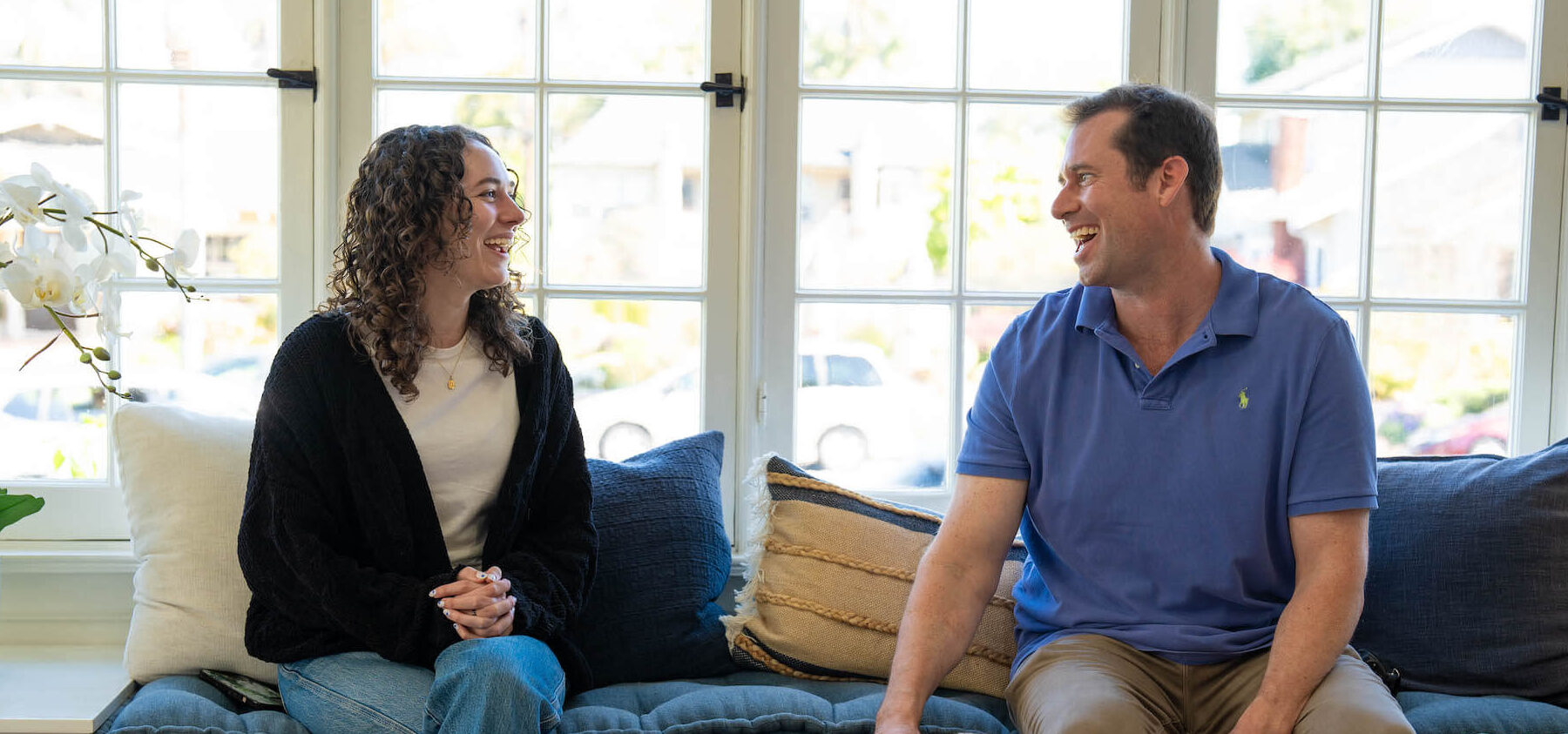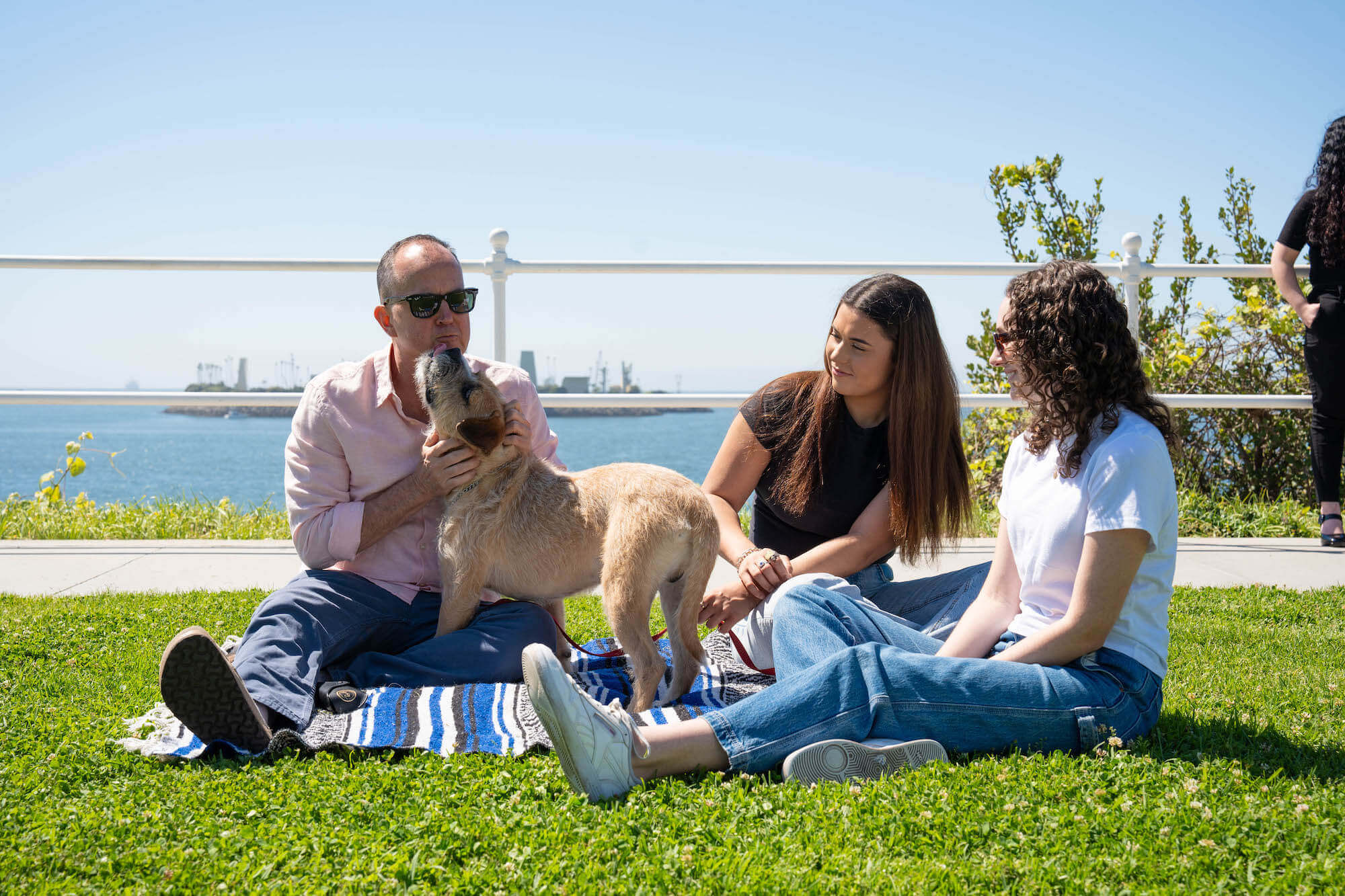Home » Pet-Friendly Rehab » Animal-Assisted Therapy for Addiction
Animal-Assisted Therapy for Addiction

- Dogs
- Cats
- Horses
- Birds
You will work with a therapist and animal in a variety of therapeutic activities highlighted in your treatment plan. Animal-assisted therapy involves clear goals for positive behavioral change with measurable objectives. Therapy takes on many forms, depending on the patient, the animal, and the treatment goals.
Animal-assisted therapy for addiction is not delivered in isolation, but rather to complement and intensify the benefits of evidence-based interventions.
WHAT IS ANIMAL-ASSISTED THERAPY?
AAT (animal-assisted therapy) is also known as pet therapy. AAT is a guided interaction between a client and a trained animal. The therapy animal’s handler may also be involved in the process.
The goal of animal-assisted therapy is to help the person engaging with treatment to manage a physical health condition, mental health condition, or substance use disorder. AAT is typically administered as one part of a treatment program that also includes:
- MAT (medication-assisted treatment)
- Psychotherapy (talk therapy)
- Counseling
The most commonly used therapy animals are cats and dogs. Many other animals can be used, as long as they meet relevant screening criteria. The type of therapy animal selected is contingent on the therapeutic goals of your treatment plan.
Animal therapy is grounded on the concept of the human-animal bond. This concept described people’s innate desire to bond with animals. Many people find that interacting with a friendly cat or dog allows them to form a calming bond with the animal. The human-animal bond can deliver the following benefits:
- Alleviating boredom
- Increasing social interactions
- Providing companionship
- Minimizing loneliness and isolation
- Increasing activity levels and movement
- Boosting mood and enhancing well-being
HOW DOES ANIMAL-ASSISTED THERAPY WORK?
Animal therapy can have many different goals, and these goals impact how therapy unfolds. Additionally, the type of therapy and target for therapy might change depending on the type of help you require.
Here are some of the most common goals for animal-assisted therapy:
- Reducing or managing pain
- Providing comfort
- Developing social skills
- Improving behavioral skills
- Increasing motivation
Typically, the process of animal-assisted therapy typically involves the animal’s owner or handler bringing the therapy animal to each scheduled session. The handler works under the guidance of a physician or treatment provider to help you achieve your treatment goals.
Many different organizations train therapy animal handlers and then connect them with healthcare providers and rehabs. Although many handlers are volunteers, they must undertake certification that includes an instructional course.
Animals used for AAT go through physical exams, immunization record checks, and temperament testing to ensure that they interact properly with the handler and the client.
The handler and the therapy animal will also participate in obedience training testing and certification.
WHO CAN BENEFIT FROM ANIMAL-ASSISTED THERAPY?
According to Pet Partners, animal-assisted therapy could improve emotional stress and disorder in the following ways:
- Decreasing anxiety
- Alleviating stress
- Reducing perception of pain
- Mitigating feelings of worry and fear
- Enhancing social support
- Improving motivation
According to Pet Partners (a therapy animals organization), animal-assisted therapy could improve emotional stress and disorder in the following ways:
- Decreasing anxiety
- Alleviating stress
- Reducing perception of pain
- Mitigating feelings of worry and fear
- Enhancing social support
- Improving motivation
Research shows that animal-assisted therapy seems to provide benefits for physical and mental health. The most robust evidence for the effectiveness of AAT involves its application for the treatment of depression and anxiety.
Researchers point out that animal-assisted therapy might benefit people from many demographics and with varying conditions. This study shows that therapy dogs were associated with streamlined mental health treatments in adolescents.
Animal-assisted therapy could be beneficial for the treatment of:
- Substance use disorder
- Depression
- Anxiety disorder
- ADHD (attention deficit hyperactivity disorder)
- PTSD (post-traumatic stress disorder)
- Dementia
- Autism spectrum disorder
- Schizophrenia
RISKS OF PET THERAPY
The primary risks associated with animal-assisted therapy involve:
- Sanitation
- Safety
If you have allergies, pet therapy may trigger an allergic reaction, depending on the animal used.
Human injury is uncommon in animal-assisted therapy, but it can occur. The most common scenarios that lead to injury include:
- Unsuitable animal used for therapy
- Animal handled inappropriately during therapy
Some people may become highly possessive of therapy animals, leading to a reluctance to relinquish the animal after a session, potentially lowering self-esteem and provoking depressive symptoms.
FINDING AN ANIMAL-ASSISTED THERAPIST
If you engage with a treatment program at rehab for a substance use disorder, an alcohol use disorder, a mental health disorder, or a co-occurring disorder, animal-assisted therapy may be delivered to supplement evidence-based interventions.
Animal-assisted therapy often serves in conjunction with traditional work done by a licensed psychotherapist, social worker, or other mental health care provider.
Before committing to an ongoing program of AAT, it is worth asking the potential therapist the following questions:
- How will they address your particular concerns?
- Have they got experience in dealing with this type of problem?
- What is the process involved?
- What is the treatment timeline?
If you engage with animal-assisted therapy as one of the holistic components of your treatment program at rehab, you may find it beneficial in your ongoing recovery. We can help you achieve this here at Gratitude Lodge’s pet-friendly rehab centers.
PET-FRIENDLY REHAB AT GRATITUDE LODGE
If you are addicted to alcohol, prescription medications, or illicit drugs, we will welcome you and your pet when you initiate your recovery at Gratitude Lodge. We have treatment centers located in San Diego, Long Beach, and Newport Beach.
Before you engage with treatment, you may find it beneficial to undertake a supervised detoxification at one of our licensed medical detox centers. After a week or so, you will be ready to transition into a 30-day inpatient program or an intensive outpatient program.
For those suffering from addictions with co-occurring mental health conditions, we provide integrated dual diagnosis treatment.
All Gratitude Lodge addiction treatment programs offer access to these interventions:
- MAT (medication-assisted treatment)
- Psychotherapy (talk therapy)
- Individual counseling
- Group counseling
- Holistic therapies
- Family therapy
- Daily meetings
- 12-step immersion program
Start the process of reclaiming your life from addiction by engaging with evidence-based and holistic treatments like animal-assisted therapy at Gratitude Lodge by calling 800-994-2184 today.











